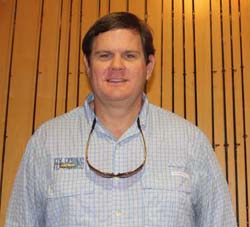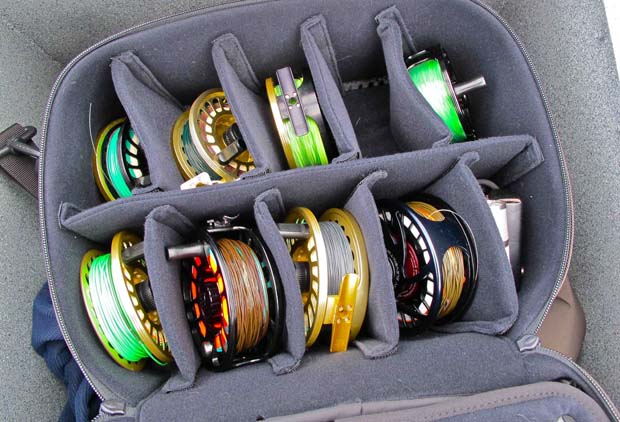Choosing a flyline in the modern world
By David Olson, Managing Partner at The Fly Shop of Miami

David Olson is a Federation of Fly Fishers Certified Professional Casting Instructor, Designated UMPQUA Commercial Fly Tyer and tournament level fly casting champion.
You Can’t Be Serious?
[dropcap]E[/dropcap]very so often, someone comes into the store and says: “I need a flyline.“ As if that statement alone is a qualifier and enough information for me to go on. And as soon as I ask for any details, I get a blank stare – they’re clueless. No idea as to size or any of the other extremely important variables.
Understanding The Process:
Choosing a flyline today is far more complicated than it was just a dozen or so years ago, and the same can be said for choosing a fly rod – neither should be taken lightly. Here’s three basic bits of information you’ll need to provide the fly shop salesperson in order for him or her to help you with selecting the right fly line/s:
1. Which rod/s will the line/s be going on?
2. What situations will you be fishing?
3. And here’s a tough one for all men with a full tank of testosterone. How good a caster are you?
Answer the first two clearly, and the third honestly, and you’ll be on your way with the right fly line/s.
Not so many years ago when I started in the fly shop business, the choices were simple: pick the weight, choose floating or sinking, and how much you wanted to spend. Done. Today however, there are a myriad of choices. If you understand the choices, which have all been added over the years to accommodate many, many fishing situations and to make casting a lot easier, you’ll be a better fisherman than you would have been those not so many years ago. Competent staff at your local fly shop will be able to help you make good choices in fly lines if you are up to speed on what, when, and where.
Pairing:
The flyline should be the appropriate weight for the chosen rod. Today, all rods are given a number designation from 1WT to 15WT, with 7WT thru 12WT being the most commonly used in use in Florida. Most casters should choose the same size line as the rod, or possibly one size heavier for certain situations which I’ll explain later.
Numeric Weight Designations:
Theoretically, all fly rods are designed to support and propel a certain amount of weight, and that designation, expressed numerically, is matched with the same numbered line. For example, an 8WT rod is normally matched with an 8WT line, and so on. However, a novice fly caster or an older person might benefit from a size heavier line than the designated rod weight. For example an 8WT rod matched with a 9WT line. The benefit is that the added weight (9WT) flexes the rod (8WT) more, providing more feedback and thus better timing. Also, overlining is practical for making short, quick casts. However, it is very important to know that some fly line manufacturers already provide heavier than standard fly line (always read the fine print), so over lining with these fly lines would not work out well.
Taper Length:
The length of the taper of a fly line is an important factor. The main components of a flyline’s taper (head): front taper, belly, and rear taper. These individual parts determine how the line presents the fly, whether the line is best suited to long or short casts, and how smooth and quick it makes the cast . Shorter overall tapers make it easier to load the rod quickly ,and are easier for beginners to use. longer overall tapers take longer to get going, but give the better caster the chance for longer casts. A long front taper allows for a delicate presentation, but makes turning over a large, wind resistant fly challenging. The opposite is true for shorter front tapers. Longer bellies allow for longer casts, but make short, quick casts difficult, and take more skill to cast. Longer rear tapers tend to smooth out casting yet take a bit more time to shoot additional line to a cast.
Temperature:
Temperature also plays a part in choosing the best flyline. Today, lines are usually rated for different climates, such as coldwater or tropical. A line designed for coldwater stays supple is cooler air and water temperatures, but becomes very limp and shoots poorly in warmer temp. A line designed for tropical conditions stays stiff and shoots well in the heat, but resembles a Slinky in cold weather, with so much memory it is a nightmare to fish with. Make sure your line is rated for the conditions you fish in, or you will be miserable.
Sight Fishing? Deepwater?
Another factor is how deep you need to fish the fly. A sinking line can often save the day , and I usually carry one in situations I in which I am unsure of what to expect . Lines have different sink rates, and the right one makes it easier to fish . The amount of current also influences the choice , as fast current delays the sink rate of flylines. A clear intermediate and a medium sink line will cover most situations. They also cast easier as they are denser and have less air resistance, but are harder to lift from the water.
Color:
Finally, color can make a difference, if you have a choice. I prefer a brightly colored line, as it makes it easier to time your casts, and easier to see your fly and know when to retrieve. I personally don’t believe a bright line spooks fish, as all line will appear as a silhouette to the fish. In the many casting lessons I have done, I have found that students with bright flylines progress faster, period. A line you can see improves your timing, as well as make it easier to see your mistakes and correct them.
When you go to your local fly shop to purchase a fly line, all you need to know to get off on the right foot is what rod you’re going to fishwith and where you’ll be fishing. A good fly shop employee will be able to fit you out properly, and the better shops will also rig your reel. You should connect with your local shop often as they’re always up to speed on fishery information and what’s new in the marketplace.
[information]
8243 S Dixie Hwy
Miami, FL 33143
(305) 669-5851
[/information]







